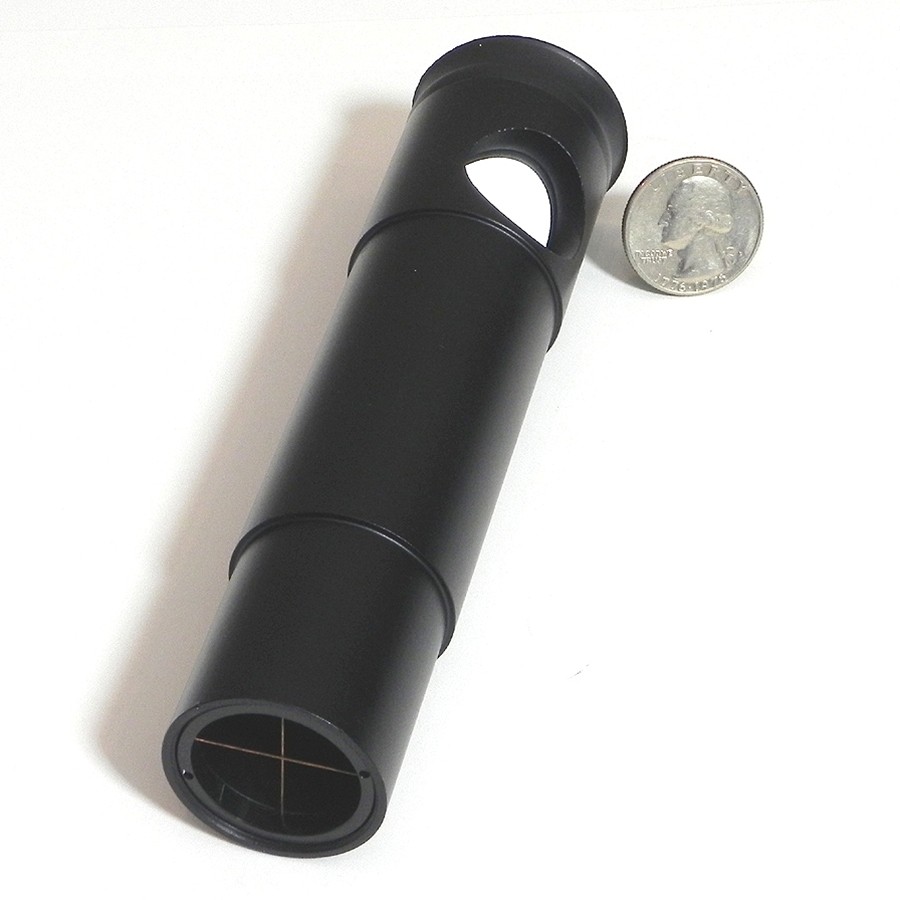
Tectron is no longer in business, but the tools are common in the used market.


Mfrs.: Glatter, FarPoint, etc.Ĭylinder with peep hole at one end and crosshairs at the other. Not useful unless perfectly collimated itself, possessed of a small beam diameter, and not accurate enough for primary mirror collimation unless used with a Barlow lens, but quite useful in the dark. I don’t recommend these except, perhaps, as a quick check to see if the optical elements are at least in gross alignment at the start. The most commonly used (there are other exotic, do-it-yourself tools that also work, but they are uncommon) Newtonian collimation tools are:Ī simple peep-hole, though not good enough for scopes below f/10.
#Collimating a reflector telescope how to
What follows is a description of how to collimate accurately to a level where collimation errors no longer influence the image quality. That means you can observe from dusk to dawn without worrying about collimation during your observing hours, whatever the f/ratio of your scope. Since miscollimation may occur during the night due to sag or movement in the various telescope components, learning to collimate accurately insures that the degree to which the telescope un-collimates in use will never cause the actual miscollimation to drift outside of the envelope of allowable tolerances of collimation errors. So many other factors can reduce the quality of the image in a telescope (there is a veritable “stack” of image-blurring aberrations) that are beyond our control that it makes no sense not to address and fix the presence of miscollimation when it can so easily be reduced to non-visible levels, and IS in our control. A very small miscollimation can introduce visual effects exceeding ¼ wavelength of aberrations, the maximum allowable error before the image deteriorates to less than the aperture should display. Extended objects, like the Moon or planets, will have details “smeared” out and focus will be nearly impossible to achieve. At worst, every star in the field will display a flaring away from a poorly focused image that resembles a small comet. What happens if the scope is not collimated? At the very least, the position of best focus will not be located in the center of the field of view. The reason I mentioned coma is that if a TeleVue Paracorr coma corrector is added, the maximum allowable tolerances for miscollimation of the Focuser Axis (Focuser Axial Error, or FAE) reduce to 1/6th the allowable miscollimation without the corrector, so learning the techniques for collimation of the focuser axis to a couple hundredths of an inch is critical with shorter f/ratio telescopes, which typically do use a coma corrector like the Paracorr. It still results in a small coma-free field, but slightly larger than the one quoted above from Sinnott, et.al.] *Everhart’s less stringent calculation is. 0.0875”, or 2.22mm, on an f/5 scope)*, and a very slight misalignment of the optical axis can have a devastating effect on the very presence of any coma-free field in the eyepiece! 0007 inches times the f/ratio cubed (e.g. [Though the purpose of this article is not to discuss coma, but collimation, it is illustrative to note that the coma-free field of view in a Newtonian reflector is figured at.

Fortunately, the same techniques for collimating the short focal ratio telescope can be equally well-applied to longer focal ratios, so the techniques you learn for one can be used for the other.

Improvements in technique are necessary, and that is one of the purposes for this article. Techniques that work fine with the loose tolerances of long f/ratio scopes simply aren’t good enough to provide the best possible images in short f/ratio scopes. At f/6, that tolerance calculates to 1.08mm at the focal plane, but at f/4.5 only 0.46mm. Since that cubed figure goes down rapidly as the f/ratio diminishes, you can see that excellent collimation becomes a necessity with shorter f/ratio scopes because of rapidly decreasing tolerances for miscollimation. To wit, the tolerance for primary mirror axial error (PAE) is usually given as. These must be lined up to produce high-quality images, but the necessity of doing so becomes more critical the shorter the focal ratio of the scope. Though lining up the secondary under the focuser is essential for uniform illumination of the field of view, there are only two critical alignments in Newtonian collimation: the Focuser Axis (aligned by adjusting the secondary mirror), and the Primary Axis (aligned by adjusting the primary mirror). The telescope most likely to need collimation is the Newtonian reflector (which includes Dobsonians) because it is most likely to have its mirrors knocked out of alignment by handling, travel, and/or reassembly at an observing spot.Ĭollimation is the alignment of the optical parts of a telescope. “ If I have seen further it is by standing on the shoulders of giants.” - Isaac Newton


 0 kommentar(er)
0 kommentar(er)
